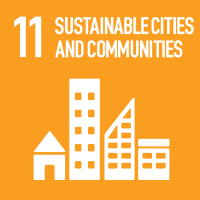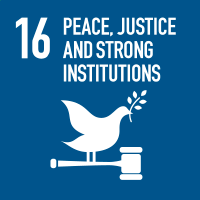Studying at the University of Verona
Here you can find information on the organisational aspects of the Programme, lecture timetables, learning activities and useful contact details for your time at the University, from enrolment to graduation.
Study Plan
This information is intended exclusively for students already enrolled in this course.If you are a new student interested in enrolling, you can find information about the course of study on the course page:
Laurea magistrale in Diritto per le tecnologie e l'innovazione sostenibile - Enrollment from 2025/2026The Study Plan includes all modules, teaching and learning activities that each student will need to undertake during their time at the University.
Please select your Study Plan based on your enrollment year.
1° Year
| Modules | Credits | TAF | SSD |
|---|
2° Year activated in the A.Y. 2024/2025
| Modules | Credits | TAF | SSD |
|---|
6 modules among the following| Modules | Credits | TAF | SSD |
|---|
| Modules | Credits | TAF | SSD |
|---|
6 modules among the following| Modules | Credits | TAF | SSD |
|---|
Legend | Type of training activity (TTA)
TAF (Type of Educational Activity) All courses and activities are classified into different types of educational activities, indicated by a letter.
History of law and cultural heritage (2024/2025)
Teaching code
4S009822
Teacher
Coordinator
Credits
6
Language
English
Scientific Disciplinary Sector (SSD)
IUS/19 - HISTORY OF MEDIEVAL AND MODERN LAW
Period
2° periodo lezioni (2B) dal Apr 4, 2025 al May 24, 2025.
Courses Single
Authorized
Learning objectives
The course is included in the learning area on Food, fashion and cultural heritage. The course illustrates the emergence of the need, which has existed since the modern age, to identify and protect a set of tangible and intangible assets in which the civil community recognises a founding and central element of its cultural identity, a plurality of cultural elements belonging to the common tradition of a people and of which the law itself is an integral part. Taking into consideration a broad historical period, ranging from the recovery of the various traditions of numerous Italian cities, carried out for example by Muratori in the 18th century, to the contemporary movements claiming the original cultural heritage of the natives of America or Australia. The role of the law will be highlighted and the ways in which it has hindered or favoured the development of these cultural legacies, and above all, the salient stages of the evolution of Italian and international legislation and case-law on these issues will be studied, with a focus on the constitutional principles involved in the affirmation of ancient traditions.
By the end of the course, students will have acquired basic fundamental knowledge about the emergence of the concept of cultural heritage, its progressive spread and the ways and forms through which law has contributed to this historical evolution.
Students will also acquire the ability to use the historical knowledge they have acquired to face and solve practical problems typical of the professional context in which they will operate. Students will also be able to verify the practical consequences of the theoretical framework and to set, in written and oral form (and also through group work, written exercises and the method of Problem Based Solving - PBS), the solution to concrete issues, using the appropriate and specific disciplinary vocabulary, adopting the correct lines of reasoning and argumentation, and formulating autonomous judgments. The teaching method used is functional to the continuous learning and updating of acquired knowledge.
Prerequisites and basic notions
To successfully attend the course, the student should possess the basics of public law (with particular regard to constitutional law), as well as having a cursory knowledge of the sources of European and international law. in addition, knowledge of the main European historical events is required, so that the student will be able to adopt an adequate historical perspective (with particular regard to modern and contemporary history); as well as having a general knowledge of the sources of European and international law. In addition, knowledge of the main European historical events is required, so that the student will be able to adopt an adequate historical perspective (with particular regard to modern and contemporary history).
The fundamental concepts will however be resumed during the course.
Program
The course aims to study and investigate, in a diachronic line, the evolution of Italian, European and international law relating to the identification, protection and promotion of cultural heritage.
In particular, the following topics will be examined:
1. Law and Cultural Heritage: difficult definitions.
2. The value of cultural property and its protection. (Legal systems compared: Europe, Africa, Asia. The Effects of Colonialism on Cultural Heritage).
3. Art in modern constitutionalism.
4. Collecting, showing, protecting. The birth of museums and legislation for protection.
5. The protection of cultural heritage during the revolutions.
6. The Restaurazione (Pre-unification Italian legislation, hints at European legislation in the early 19th century. Antonio Canova and the Restoration. Art as an instrument of power).
7. Law as Cultural Heritage.
8. The Unification of Italy.
9. The advent of positivism. Cultural Heritage between the two centuries
10. Cultural Heritage and War.
11. Fascism and the identity of the Italians.
12. The Dark Side of Cultural Heritage: National Identity as a Factor of Exclusion (Nationalisms in Europe; from the Race Manifesto to the Racial Laws).
13. The Italian Constitution and the protection of cultural heritage.
14. The work of UNESCO.
15. European Institutions and Cultural Heritage.
16. Cultural Heritage a Historical Comparison. Understanding Conflicts: Russia and Ukraine; Israel and Palestine.
Bibliography
Didactic methods
The teacher will use: a) frontal lessons, in chronological order; b) thematic insights on topics of particular historical-legal interest: students will be presented with case studies to be analyzed individually or in groups and then discussed in the classroom, in order to stimulate their research, reflection, comparison and exposition skills.
The case studies concern current legal issues and their connections to famous legal events and processes in the history of law.
The status of attending student is only obtained with classroom attendance of at least 80% of the lecture hours.
In addition, within the course, three lessons (1 CFU) will be delivered at a distance, on the zoom platform. These lessons may be conducted as seminars and may be taught by external lecturers.
Lessons are conducted with the aid and use of digital technology (slides, videos, audio files). The digital material is made available to the attending students.
For students with disabilities or specific learning disorders (DSA), written handouts will be distributed and, upon request, lessons will be video recorded.
Learning assessment procedures
The exam will take place through an oral question of about 20 minutes, dealing with the topics of the course.
There are no intermediate examinations. Students with disabilities or specific learning disorders (SLD) may use the handouts previously distributed during the examination. Students with special health needs (e.g. with Covid) or for special ERASMUS-related needs may agree with the lecturer to use the telematic method.
ERASMUS students are requested to make contact with the lecturer at the beginning of the course in order to correctly set up attendance and/or study activities.
Evaluation criteria
The assessment criteria are based on: Knowledge of fundamentals; level of thoroughness; ability to critically reason; quality of exposition; mastery of specialised legal vocabulary. The grade will be expressed in thirtieths.
Criteria for the composition of the final grade
The exam is not divided into modules, so the entire grade depends on the final exam.
For attending students, the final grade will be distributed as follows:
- Oral examination on topics covered during the course (80%)
- commitment and participation shown during the lessons (20%).
Exam language
Inglese o Italiano



